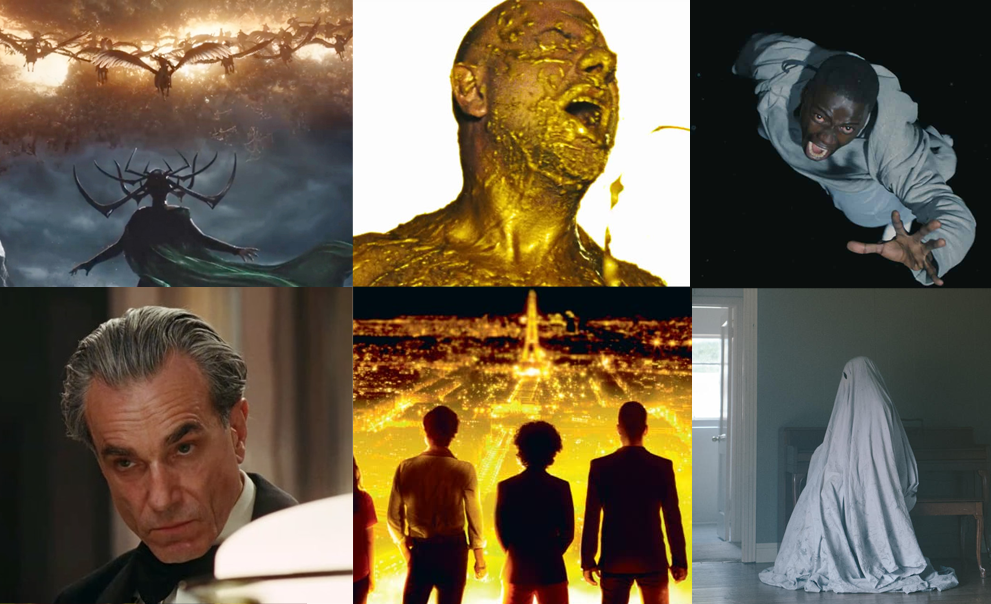
2017 was a pretty killer year for movies, pervaded as it was by a haunting tone. Legitimately, the top 5 of this year are all time classics, and the next 10 are watch-whenever-its-on bangers across the board. Usually there are films that I love but make me wince, or pretty puzzle boxes that lose their luster once solved, but instead 2017 was chock full of tone poems that make you feel something unique and indescribable, alongside some of the best spectacle we’ve ever seen, with moody genre films satisfying decades old fandom wish lists. Somehow, movie making is surviving the “death of cinema” and the streaming apocalypses, though you might note that none of these films were funded by the Streamer Corps. Perhaps that is still a battle for the future. As it stands today, 2017 was one of the best years for film ever. Please, peruse and enjoy.
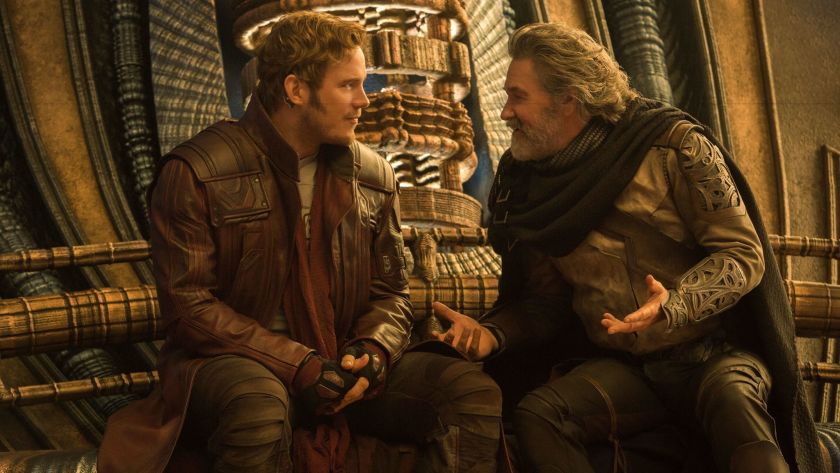
25. Guardians of the Galaxy Vol 2
Henceforth this will be remembered as the “one with Kurt Russell,” such is the dominance of the central performance. Navigating a tricky galaxy spanning family narrative, Vol. 2 is another winning hangout movie that derives much of it’s joy from clowning on its friends. The strength of its relationships is such that they tether together a messy CGI explosion of an ending. New character Mantis is also a delightful addition, upstaging the rest of the cast’s comedic chops.

24. Logan Lucky
One of several pieces of media suddenly buoyed by John Denver’s 1971 “Country Roads” in 2017, Logan Lucky is a swaggering heist film that finds Soderbergh operating with many of the same tools from his Ocean’s films but using them for a country western setting. Channing Tatum, Adam Driver, and Daniel Craig all are asked to soak up a Kentucky drawl and make as exaggerated a character as possible in that space. This could easily come off as stupid, but here it’s a funny entertaining jaunt, thanks in part to a focus on humor and an unwillingness to pile on plot twists.

23. The Florida Project
This is a movie that is haunted by a spector, a malevolent demon that makes its home in the marshy Florida everglades. Yup, we’re talking about Disney World. Just down the block from the happiest place on Earth, a seedy motel run by Willem Dafoe’s put upon manager is the last stop for a pretty large swath of humanity who literally have nowhere else to go. The kids who live at the motel are completely unaware of their situation though, they run and play around burnt out buildings and make a game out of hustling money for icecream. The Florida Project is an interesting film about how people adapt to their situations but still stay just regular humans even in dire circumstances.

22. I, Tonya
Margot Robbie’s bug-eyed gleam is weaponized in this dramatization of Tonya Harding, the Olympic figure skater implicated in the pre-competition knee-capping of rival Nancy Kerrigan. I Tonya portrays Tonya as a scrappy newcomer who needs to win because she is too poor in every other way in her life (love, stability, money). This traps her in a desperate reliance on the talent she has available, the stereotypes she can use in her favor, and unfortunately on the awful support network of her shrew hateful mother and her wife-beating husband. It’s certainly a sympathetic portrayal, which suggests an emotional core that might shed light on one of the most bizarre Olympic events to occur in the modern age.

21. Split
McAvoy is the star of this show, a split personality horror film that throws our female protagonists into the pit almost immediately. He grimaces, leers, chides, and apes a naive waif in a surprisingly tightly paced thriller. Surprising because it comes from M.Night Shamalyan, a once ostentatious new talent now turned odious bore by serious writing problems with the later half of his work. Consider him redeemed, for now, by this fun picture, an apparently sideways pilot for his own twisted super-hero universe.
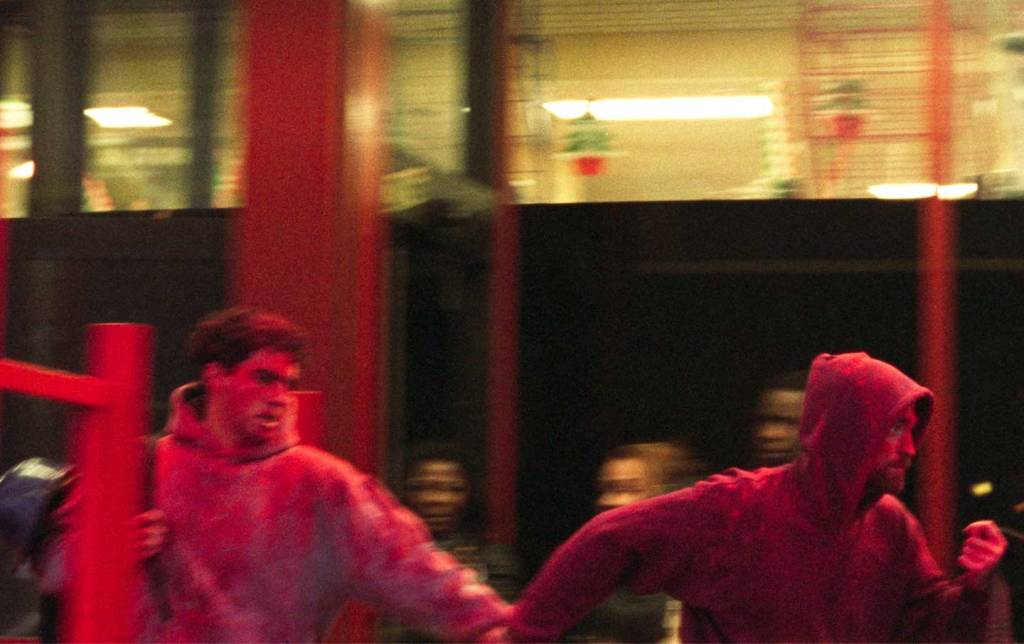
20. Good Time
Several films on this list portray our protagonists between rocks and hard places. In this case, Robert Pattinson’s Connie attempts to extricate his brother and himself from the loser spiral of life by putting together a robbery, but things go sideways for pretty much the rest of the film. The Safdie brothers put together a compelling hussle/scramble here, Connie is not a bad guy but he would hurt you if you stood between him and his objective. Is this what it takes to rise up out of the poverty cycle? Bonus points for a ripping soundtrack from Oneohtrix Point Never.

19. The Lost City of Z
Director James Gray wades into new waters with this dramatization of Percy Fawcett’s obsession with the unexplored Amazon jungle. Beginning in Gray’s comfort zone, the film starts with stodgy British people subtly putting each other down for a while, as they are wont to do. Upon returning from war, subtly put down British person Fawcett is increasingly consumed with the undiscovered country surrounding the Amazon river, and begins to risk life and limb to make expeditions there to confirm his theories about the indiginous people. The true story is fascinating but fails to really explain what drew Fawcett into the jungle pit of pestilence and violence time and time again; here Gray’s surprisingly lyrical take on the subject matter helps hint at the magic Fawcett was chasing.
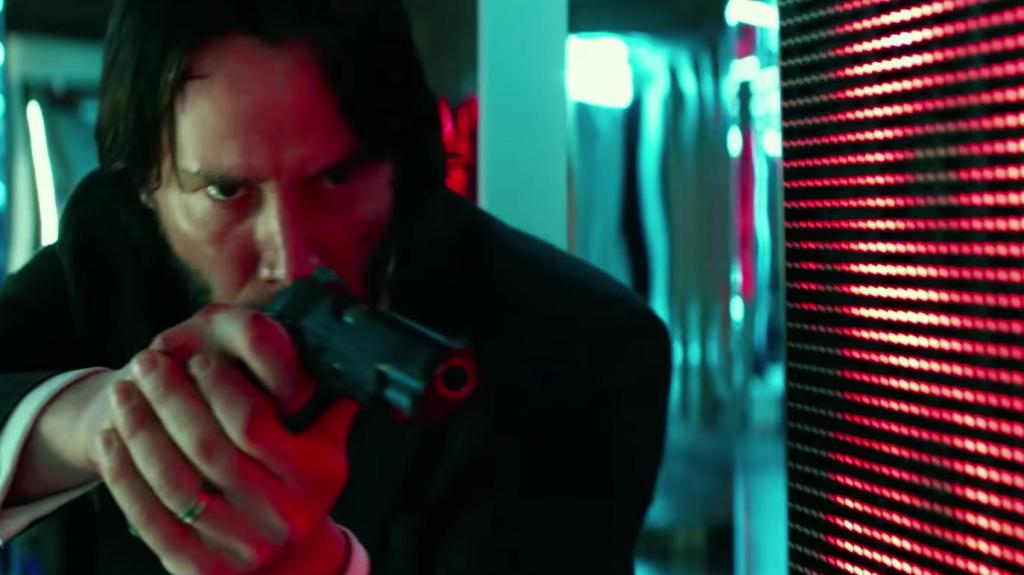
18. John Wick 2
Keanu Reeves’ disgruntled “shoot first use punches later” warrior is back to expand on the hotel-assassin mythos, to somewhat diminishing marginal utility but certainly also fulfilling the requisite brain splattering action fun quota. Although the mafia stuff is staid, Common and Ruby Rose inject some much needed rivalry into the path of Wick the unstoppable killing machine. You probably already know if you would like this movie,so it may be enough to say it continues to put together those brutal methodical fights that made the first Wick movie so invigorating.
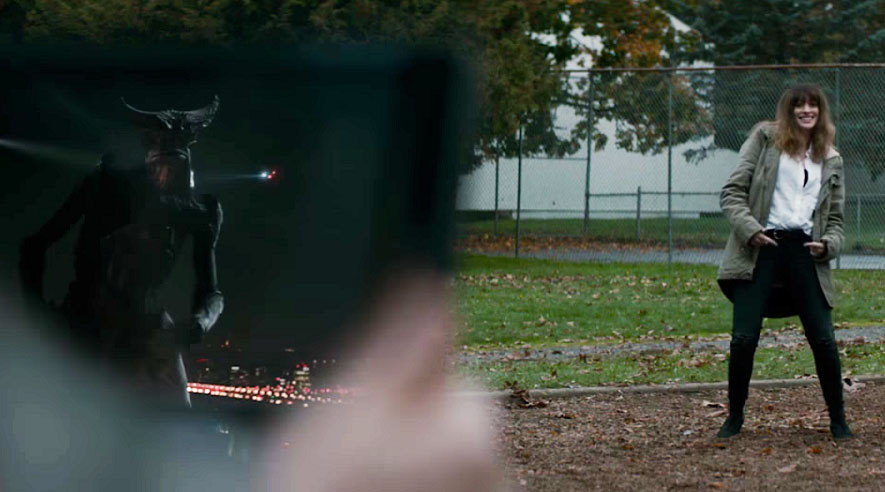
17. Colossal
It’s hard to think of a more non-intuitive pairing than Anne Hathaway, Jason Sudekis, and Timecrimes’ Nacho Vigalondo, but Colossal mixes all their weird angles into this very strange cocktail. Hathaway’s Gloria moves back, defeated by recent setbacks, to small town America to straighten out her life. Approximately the same time, a giant building crushing monster shows up in Korea and an old flame shows back up in her life. Are these events all linked by some improbable happenstance? Probably! Watching Gloria piece the puzzle together provides the comical joy found in this quirky film.
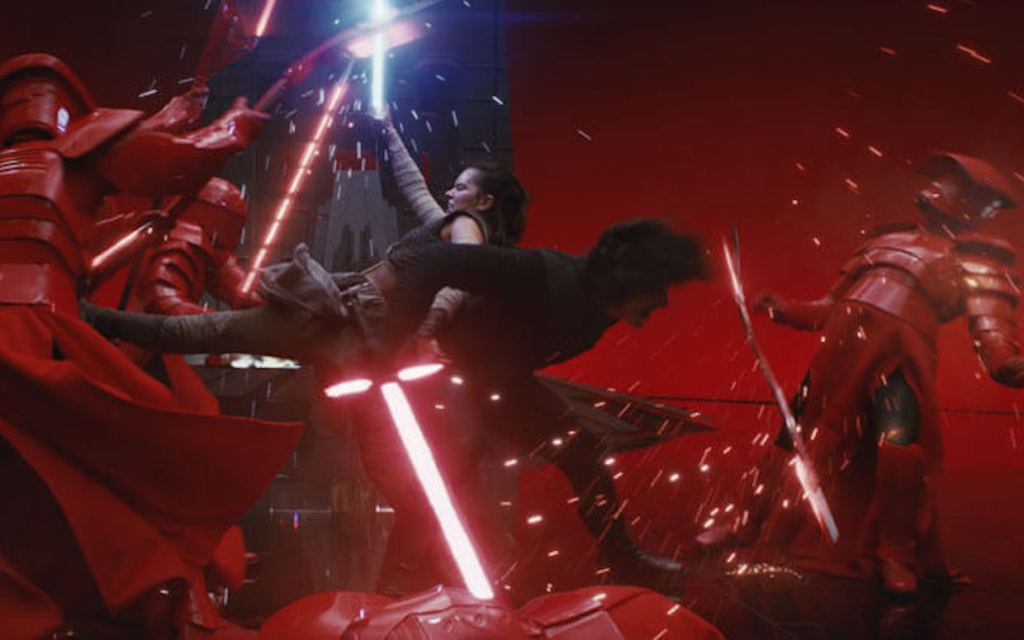
16. Star Wars: The Last Jedi
Rian Johnson was given an unenviable task – follow up Abhram’s safer-than-purity-rings Force Awakens with the expected Empire Strikes Back megatwist. Instead of spooling out plot though, Johnson twisted up the entire mythology, throwing away the good vs evil underpinnings of the universe and making it more about cycles and balance. As a necessary exclamation point to this, The Last Jedi subverts nearly the entire Star Wars canon, making bad guys and good guys into fools as they struggle to crown themselves leaders and chosen ones. Does this make for a very good Star Wars movie? Not really! The space stuff is suitably naval and there are shades of Battlestar Galactica’s more nuanced take on ship living, but the arc is quite muddled by blockbuster standards and it will not provide the same electric charge as Force Awakens charming arc. However, it does something I didn’t really expect a Star Wars movie to ever do, and that is reframe the world and actually create new possibilities within the recurring tragedy. For the first time in a long time, the galaxy far far away actually felt foriegn and mysterious again.

15. Three Billboards Outside Ebbing Missouri
Billboards is a hairy film, not because it shows you something grotesque but instead because it raises a difficult question and then fails to answer it despite three or four messy attempts at resolution. I think that’s the point though. Francis McDormand sells a tough backcountry small town mom whose kid disappeared down a trail that’s grown since cold. She attacks the only thing that is still relevant to her child, the local police department that failed to solve the case, and enters into a low key war with Woody Harrelson and Sam Rockwell’s average joe cops. There’s not really any winners out of the situation, so instead the film tries to figure out how to move forward without a happy ending.
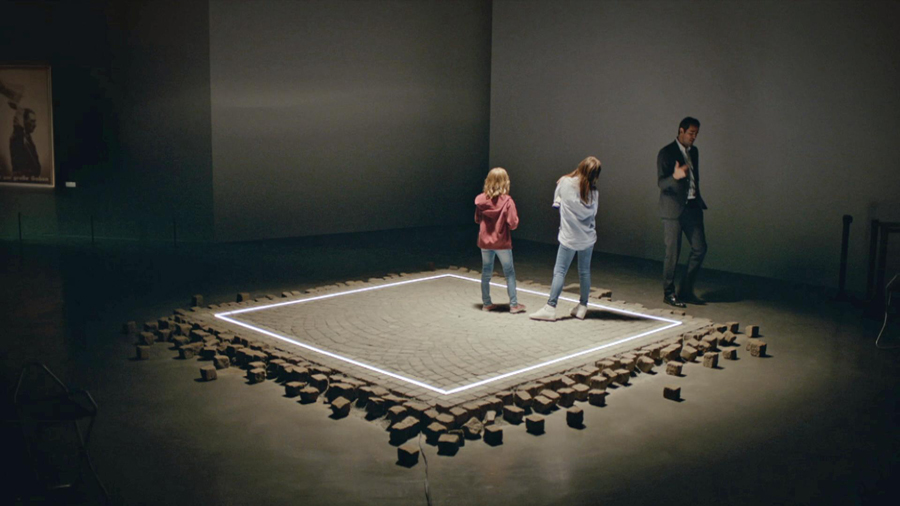
14. The Square
Palm d’Or winner The Square is vicious to exactly the kind of people that would enjoy it. Staged as an extended crisis management month in the life of a museum curator, numerous events force the museum patrons and employees to actually come in contact with the culture they claim to comment on, much to their nose wrinkling dismay. The movie posters showcase a shot from the movie within a movie, a representative gala with an artist who takes his work from uncomfortable right into deeply unpleasant. Can good art really be fun, clean, or even useful? Though the longest arc of the narrative may not provide surprises, the Square still describes extremely proficiently the blurred place where charity, artistic merit, and contempt coexist.
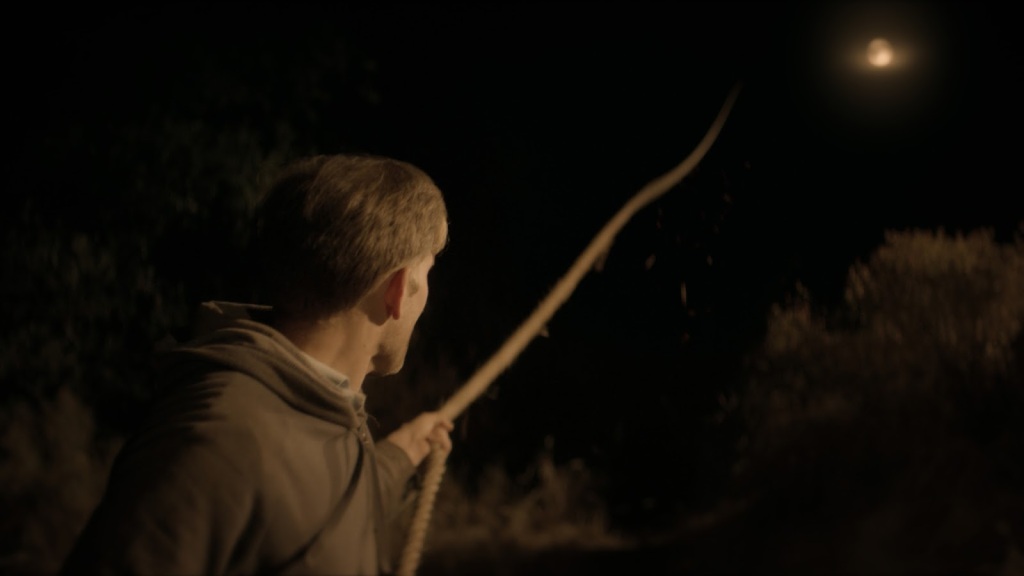
13. The Endless
If you ever wondered why more smart sci-fi movies aren’t being made like Ex Machina and Arrival, I’ve got some good news for you. Aaron Moorhead and Justin Benson are quietly churning out make-it-work budget features that are progressively becoming more and more stunning. Their latest, the strange skied The Endless, finds two brothers going back to a cult they escaped a decade ago to find answers about their past. The cult leader promises salvation, and oddly enough everyone there seems as joyous and youthful as the day the brothers left. The Endless is an interesting take on how mankind interfaces with the questions of the universe. Sometimes we find the big mysteries heavenly, sometimes hellish, and often we cycle in between.

12. Baby Driver
This crowd pleasing heist film reveals Edgar Wright to be sharpening his generally affable and jocular approach to hang out movies into a razor sharp spear. Edgar handicaps himself with a protagonist on the spectrum, a child driving prodigy who has been tapped by Kevin Spacey (no not in that way, this one time) as an accessory to bank robberies. The opening scenes are evocative of Drive, but this time with a driver who has an identity and purpose. The love story center is a bit gooey, but the central conceit revs through that stumbling block: all of the action is literally set to the beats of the many great songs in the outstanding soundtrack. Everything you see in the big set pieces happens in syncopation timed to the current song. It’s a bit hypnotic and very unique.
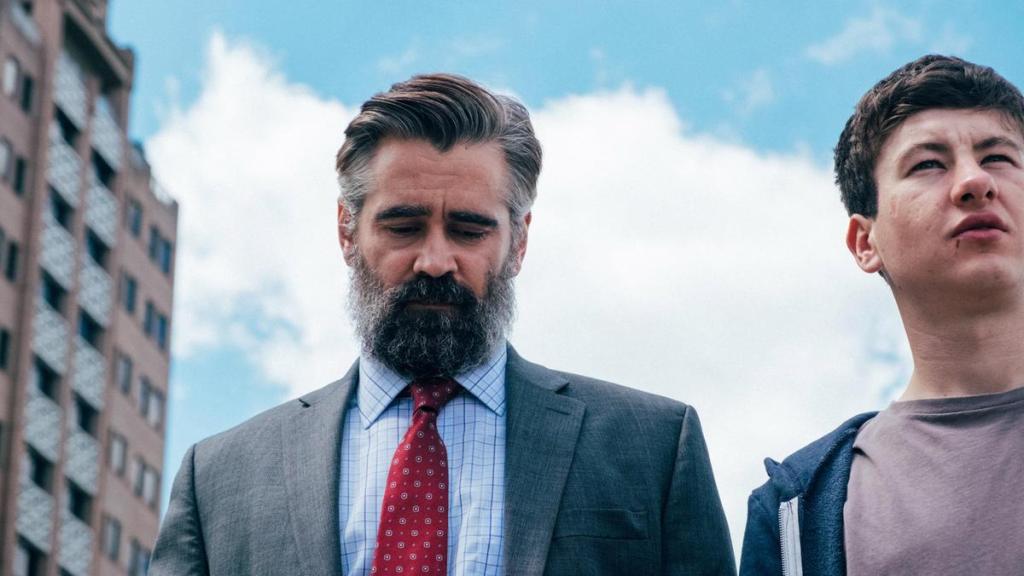
11. The Killing of a Sacred Deer
Lanthimos trades specifically in difficult films, like the repellant Dogtooth and the bizarre (though beloved here) Lobster. His latest, Sacred Deer, is once again not exactly a crowd pleaser; Colin Farrell’s by-the-book doctor has to grapple with persistent, possibly pernicious attention from the son of a patient that was accidentally killed on the operating table. This sets up a moral issue that makes for the most straight forward plot from the director yet, and finds Lanthimos working very close to Haneke territory (sadly in a year where Haneke himself couldn’t salvage much from his latest project), with macabre plot twists layered in a cake of human selfishness and indifference. Upon viewing this film, I felt like I finally understood what Lanthimos was going for with his unique style, as if the more severe elements of this particular plot revealed contrasts in the actors better. Principally, his charming, award winning actors like Nicole Kidman and Farrell, are instructed to not use any charm or personal graces. The effect is bizarrely offputting, as everyone speaks to each other like automatons. Looking a little closer though this is actually not the complete stripping of personality, it is simply the deletion of the superego mask that we use to cajole and bend people to our advantage. What’s left is naked self interest, which in most cases serves us dumbly and obviously, but is always the loudest voice in the mind. In this movie, people appeal to reason without the crutch of grace, and even though everyone is being perfectly rational there is something revolting about it. Sacred Deer is not fun, but it is a fascinating meditation on the true strength of our core morals and principles.

10. Lady Bird
An incredibly earnest movie and love letter to the small town joys of a place like Sacramento, Lady Bird follows a pre-college theatre kid who has had to learn about the little disappointments of life earlier than those protected by the suburban bubble. Crappy boyfriends, lowered expectations, and frustrating parents are handled in lanky, awkward stride. From county fairs to tossing books into those big metal school trash cans, there’s a plethora of moments that will recall your own youthful sense memories. The heart of the story is the girl’s contentious relationship with her overbearing mother, an excellent Laurie Metcaff, who tries to control every atom in the universe in an attempt to elevate her family’s station just a bit. Filled with heaps of truthful moments and spot on acting about a corner of society we often don’t hear much about, Lady Bird is an incredibly strong directorial debut from Greta Gerwig.

9. Columbus
Opposite The Square in the argument over the utility of art in society, Columbus travels to a small town in Ohio and shows us how art can be useful to people outside of metropolitan centers. As indie films are wont to do, we end up with an interesting pairing between a career oriented twenty-something man wistfully visiting the titular town on family business, and a pre-college teenager who is desperate to leave said town. The twist is that while the teenager has pinned her hopes on the outside world and is already escaping into another culture by submerging herself in the local architecture scene, the man has tried to diminish architecture in his life as a way of doing battle with his famous architect father. Columbus succeeds as an interesting movie by wringing drama out of this opposition, rather than any particular dramatic (fake) circumstance. For instance, the man’s (an excellent John Cho) racial background is never brought up, never mentioned as any kind of rationale for action or plot, and somehow we eschew the whole tired will they won’t they thing. Even for indie films, this was one the most subtle yet compelling I’ve seen in awhile.
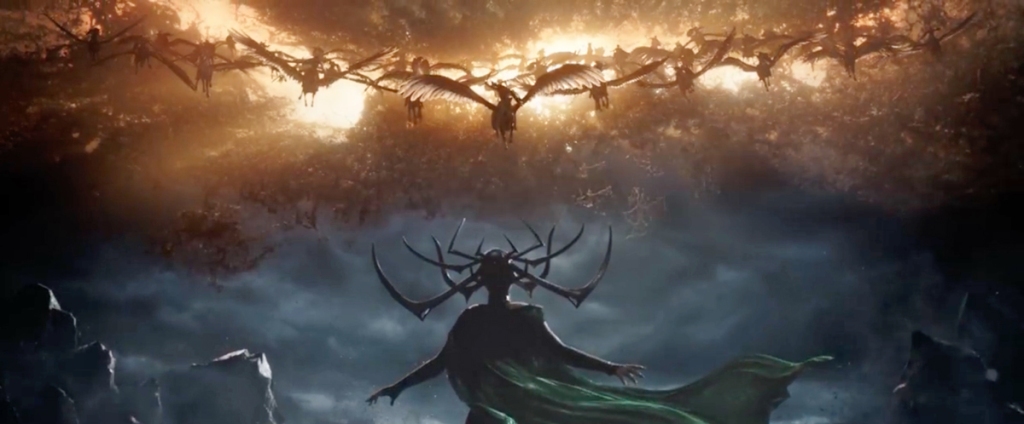
8. Thor Ragnorok
Marvel’s formula is quite controlled, certain action beats are always hit and the stakes are about the same movie to movie. There is still room for iteration though, as evidenced by the sheer number of directors who get sucked into the machine. After two wise but wrong guesses (Thor 1 was directed by the man who recently brought Shakespear to the masses, and Thor 2 was helmed by someone who had his fingers in some of the most impressive TV of the last decade), Disney finally got lucky just as I was getting very tired of these movies. Natural selection’s newest poster child, Taika Waititi, brings the perfect comedic material to Thor’s doorstep, mashing three or four comic arcs together to make a brain tripping off-world fest that somehow still has the trademark Marvel pathos. While one could argue about the ethics of strip mining so much material (the Odyssian epic Planet Hulk comic anthology is basically squished into fifteen minutes here, no longer really concerns the Hulk), the result is easily the best Marvel cinematic universe movie to date. Creative color palettes, an amusing cast of characters, and an actually deadly super villain help Ragnorok steal all of the Guardians’ best tricks and cements itself as the most stupendous big budget spectacle of the year.
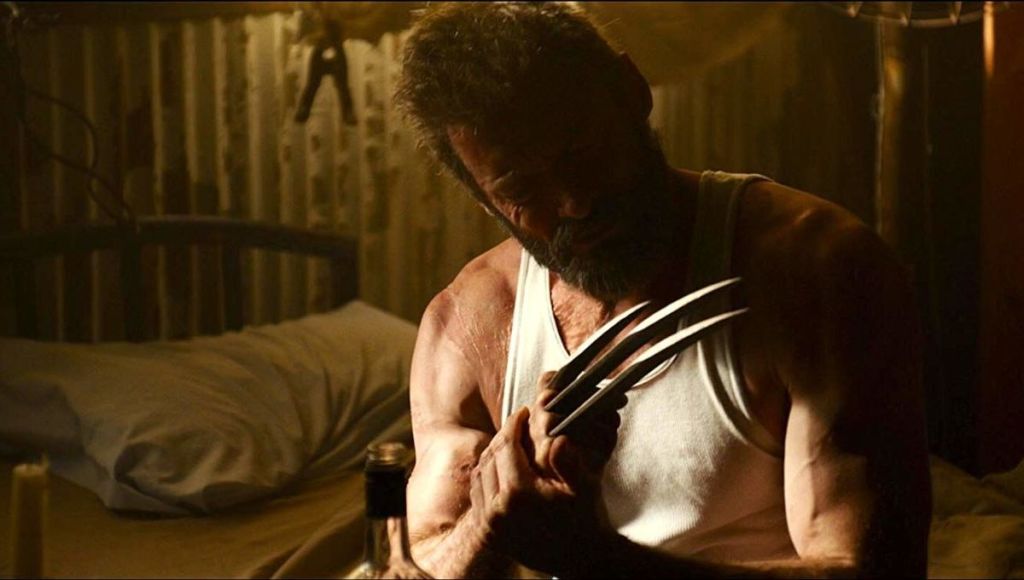
7. Logan
Part of the difficulty of discussing Logan is that it is a product of film history. That may be a little dramatic, but imagine watching this film without any knowledge of the X-men or Hugh Jackman. A bearded man with knife hands (homeless?) seems kind of sad because his dad(?) is sick and there is some other movie crammed in here with a bunch of Jason Bourne military shit. It might be fair to assume this is some kind of direct to video low concept trash that was somehow shot well accidently. Instead, this is HIGH concept trash that was shot well. James Mangold, who first took The Wolverine for a genre walk in Japan killing ninjas, completes his excision of old man Logan from the rest of the comic universe and finally tells a story that is just about him, not some mutant Hitler or secret Canadian experiments. Portrayed one last time by a game Hugh Jackman, Logan’s history and pain is all over this thing, as he attempts to ride out a legacy of violence and ostracism that has never let him rest. Wisely, there’s really nothing directly referencing that history here, and thus to enjoy this film you kind of had to have been along for the ride for at least a few of the X-Men’s. Bring your own pathos. That grants the film a lean expediency as a conclusion to the Wolverine trilogy, allowing it to focus instead on satisfying its potential rather than get bogged down in catching the audience up. Wolverine has always been a relatable antithesis to golden boy comic heroes, and here that is realized as a man who is savagely violent in a world (and a movie) that is savagely violent, a hero whose only actual power is the ability to get torn to shreds over and over again and yet still keep moving forward. For a fan since the 90’s, this is an unbelievably thrilling high point.

6. Blade Runner 2049
Remaking a 40 year old classic is an unenviable task that nearly always ends in a mediocre spiritual reboot. The core question is usually lost in an attempt to update (and therefore remake in their own image) the outdated parts of the old story, even though those details contain the ineffable core components that made the original film a success in the first place. Villeneuve outsmarts the paradox but treating the first Blade Runner, the father of modern science fiction, as hallowed ground. His “update” literally happens 40 years later, and shifts the core question, creating a film that uses the texture of the original without stepping all over its feet. Gosling works here as the taciturn detective, given more dimension than Ford’s audience stand-in, but the star of the show is the busted Southern California dystopia, neon lights splashing over the grey concrete decay of an abandoned Earth. Villeneuve adds the scary sudden violence of modern technological superiority, but otherwise hues close to the tone of Scott’s. This is a convincing, entertaining sequel that actually adds something thoughtful to the original classic.

5. Let The Corpses Tan
What a bizarre treat this was. Advertised as a Mediterranean BULLIT, this film is instead tricky and languid. A heist gets interrupted mid getaway by a couple unsuspecting cops, and that’s literally the whole movie, with everyone just pinned down on the seashore cliffs trying not to get shot in the confusion. There’s not a need for much plot, as this film is infused with incredible amounts of texture. We go into the psyche of almost everyone involved, which is sometimes represented by quizzical looks out of French New Wave, and sometimes shown as brilliant fever dreams. Completely uninvolved yet somehow the catalyst of everything happening, a matriarch artist acts as the hub of the wheel of madness. The lush 70s technicolor look, with careful attention to splashes of red and gold, help create a movie that almost feels like the definitive exemplar of the word visceral.

4. Get Out
Jordan Peele’s sudden foray into horror benefits from a clarity of vision. Horror, true horror, is not really clear and present danger – as by necessity danger is usually quickly resolved. Horror is powerlessness. Get Out is a metaphor film on the suffocating pyramid-like social structure of the American way of life and the core of the film is the prescient demonstration of how racism is still very much lurking under the surface in this country. It is also a film that’s not afraid to just stay on the face of someone who is having trouble moving, or to keep it’s villains as mostly down to Earth suburbanites. These choices emphasize the powerlessness and pervasiveness of the situation, and create a palpable fear. The movie is not just effectively emotional, it’s also very cleverly made, with the right touches of nostalgia and menacing details to make the plot believable and effective in the era of cell phones and Google. This film will probably be unequaled as a perfect example of how to make a metaphor horror film about racial injustice in America. The final master stroke is laying the core of the racism bare : it’s not really about hate (they like black people!), it’s about using anything and everything to keep your power over others.
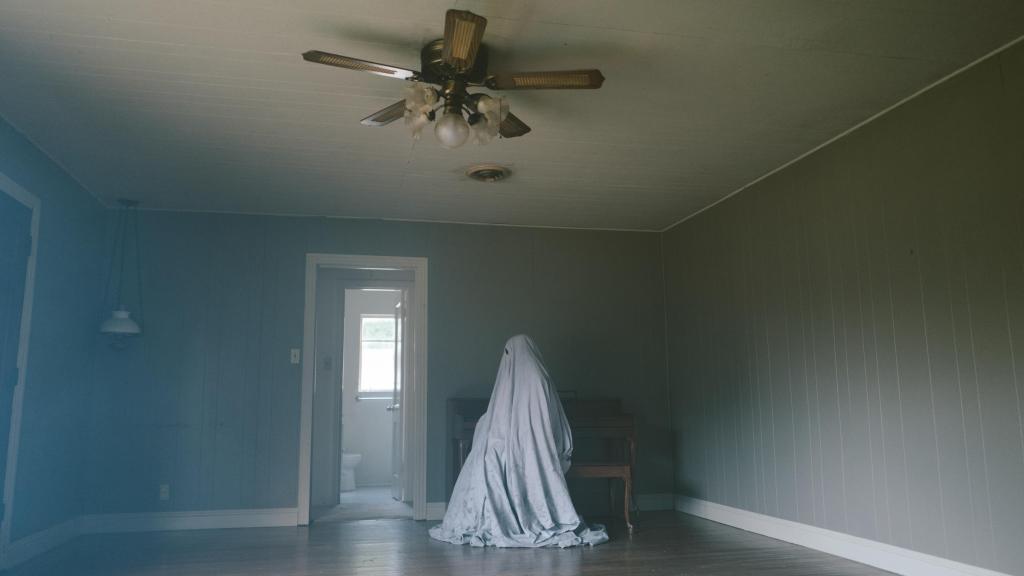
3. A Ghost Story
Death is a sad inevitability, but it is hard to describe the exact pain that comes with loss. Some of it is the actual shock of the event, of the violent separation and sudden gap that exists. Most of the pain though comes from the future. We live life and build relationships with the thought that there is some growing meaning in our connectivity and accomplishments. Death is the end (as far as we know), a punctuation mark on one’s hopes and dreams. All of the balls they got rolling and ships sailing will no longer move forward, and you will never again see a new effect on the world from them. Ghost Story investigates this by following the unassuming titular ghost, rather than the loved one who eventually accepts and moves on. Represented by a single crisp haunted sheet, mostly powerless except to gaze, the ghost watches the ruination and wreckage of the things he built play out slowly, over years. It’s not just the relationships ended, it’s small things like the song he wrote and played perfectly just once in all the history of time, which will now never be heard again, as no one is left to champion its cause. To savor that moment and know that it is gone forever is the sad glory of life. It is striking how a movie that is so silent, still, and the opposite of horror nonetheless peers so deeply into the existential terror of living. Can you catch the whisper of hope hidden in the cracks of our life still though?
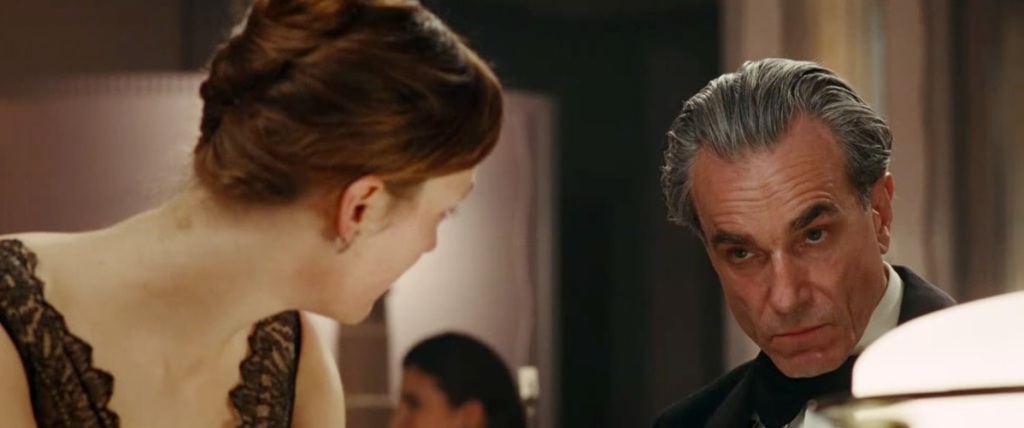
2. Phantom Thread
Well there’s plenty to be said about death and fear of death, but let’s not forget that living can be pretty miserable too! Master craftsmen Paul Thomas Anderson and Daniel Day Lewis go to a dark place without any macabre set dressing. Well, setting dresses on ladies is the business, but otherwise most of the movie concerns Lewis’ hit-dressmaker’s romantic dalliances. He is a man of passion but also quite fastidious and obsessive compulsive, and that leads to rather destructive cycles in his personal life. That is until he meets an equally dynamic opponent. The film is not a romantic comedy, instead it examines the perennial questions “Why are we like this?” As soon as something good gets close, you just love to push it away don’t you? And nothing makes for a rising tide of romantic love like a bout of weakness, self loathing, and fear. We aspire to compartmentalize, to see that love exists in a wholesome corner by itself, but actually spending time with someone forces all the other emotions to violently whip around tearing holes in the wall. Phantom Thread captures this dynamic perfectly, a unique achievement, without a single screaming match. Only a master could make you relate to being annoyed by someone buttering their toast.

1. The Best Movie of 2017
Nocturoma
Given the sometimes miserable choices of a normal existence, it perhaps occurs to us to take action. Perhaps this time, we will take decisive, final steps towards a goal that will change us and the world. We will not allow society to corrupt us and age us into the suffering constricting cages of conformity. While we are still young, maybe, maybe we can break out of the cycle, make a difference, burn a symbol. Oh folly dear reader, folly, for you live in the modern world now. Nocturoma, a dreamy French synth film, gives us a cast of young people motivated by exactly this notion. They are terrorists, but not driven by vengeance or murder, and instead are trying to make a statement. A statement about what, the film brilliantly leaves open as a vaguely anti-capitalist anti-governmental ethos with no edges. This is not about fundamental religion or cult insanity, its about hanging with these kids as they go about their day and execute a pretty well planned multi pronged attack on Paris and then retreat to a mall to hide out from the police. The juxtaposition of the advertisements, products, and young people having fun in the mall after what they have done is unbelievably striking, and the last 20 minutes will leave you with your mouth hanging open. Nocturoma is a stunningly visceral film that will make sympathize and feel queasy in the same frame as the fresh pop day gives way to synth nightmare night. This is cinema firing on all cylinders, the subtle writing, the acting capturing the nuances of naive and angry rebellion, the hanging, guilty shots, and the aural landscape all combining to create a synergistically amazing movie. As a testament to modern filmmaking technique, Nocturoma stands as the best of 2017.
Well that’s it super fans! I think we will be talking and thinking about most of the movies in this top 10 for a long time. Hope you have a good year, so long.
Originally published on Synthetic Error September 3, 2020
Comments
Post a Comment